Increasingly, tyre manufacturers are offering VF and IF marked tyres, but at a considerable price premium to tyres of similar dimensions. With standard tyres on today’s larger machines already expensive, how can the extra costs of the VF/IF tyres be justified? The answer is not simple as the VF/IF technology does contribute better performance where it matters – between the tyre and the soil.
Key function
Tyres have many functions on tractors and machines including transmitting power, providing suspension and steering; but by far the most important role is to carry the load of the machine and to protect the soil in the process.
Increasingly, heavy machines result in huge axle and wheel loads which threaten the soil structure. Tyre size and type play a big role in determining if that wheel load damages the soil.
Tyre size, ground pressure and inflation pressure
In simple terms, the bigger the contact patch between the tyre and the soil, the lower the ground pressure that is exerted. Wider and taller tyres will have a bigger contact area and lower ground pressure for a given load than narrower, smaller ones.
But tyre inflation pressure also plays a key role as it is the inflation pressure within the tyre which determines the ground pressure exerted beneath it.
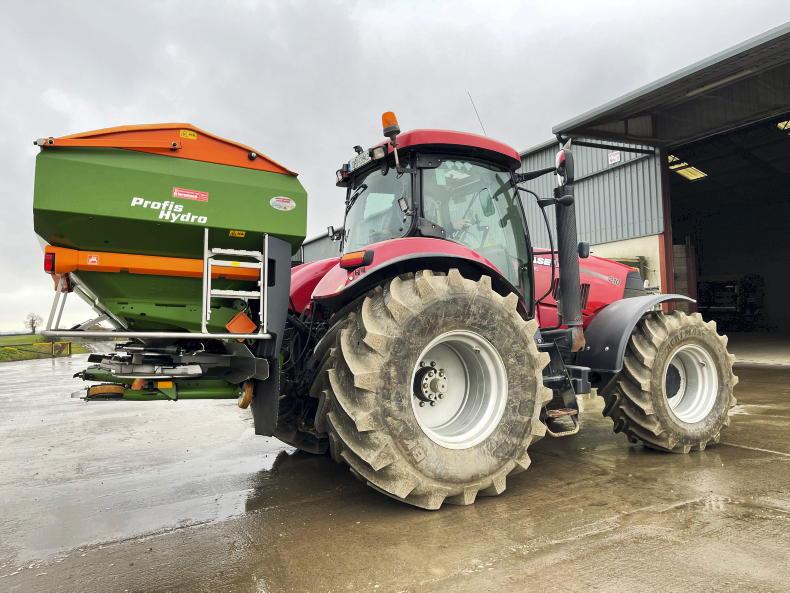
Larger tyres can carry a load at a lower inflation pressure and consequently lower ground pressure. In this way, the required inflation pressure of the tyre for its load can be used to rate how effective tyres are at lowering ground pressure. This relationship was confirmed in research at Oak Park where there was a direct relationship between soil stress and required inflation pressure (Figure 1).
Tyre deflection and inflation
pressure
While lowering the inflation pressure lengthens the contact area and reduces ground pressure, it is limited by the risk of damage to the tyre carcase. Tyres are limited to a certain deflection level. Higher speeds need less deflection (higher pressure) to avoid carcase damage. All standard tyre sizes have run at similar levels deflection for years. But over 15 years ago, Michelin introduced ‘ultraflex’ technology that allowed greater deflection which has been adopted by many manufacturers transforming the working characteristics of tyres.
IF and VF tyres
These new high-deflection tyre carcases are categorised as increased flexion (IF) and very high flexion (VF), with reduced pressure requirements detailed below:
IF tyres: Can carry load at 20% lower pressure than standard or carry 20% more at the same pressure.VF tyres: Can carry load at 40% lower pressure than normal (or 40% more load).These are huge gains, allowing a 420mm wide VF tyre (16.9in) to have the ground pressure of a standard 600mm tyre. VF tyres can have a much longer contact patch, lowering ground pressure, with traction benefits too. Lower ground pressures without increasing tyre width is also advantageous where machine width is limiting (combines and very large tractors) and in tramlines or beds where row-crop wheels are used.
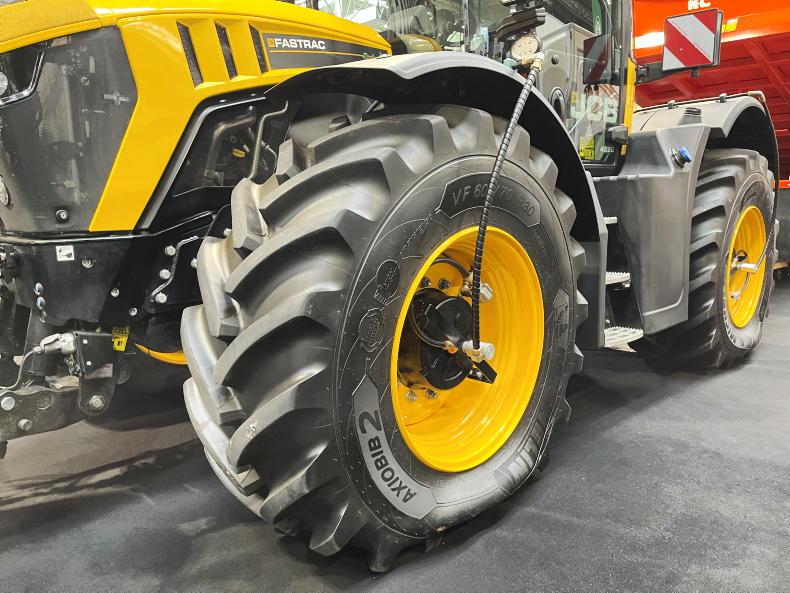
VF tyres can carry load at 40% lower pressure than normal (or 40% more load).
Disadvantages
VF/IF technology is expensive. However as manufacturers offering VF/IF tyres increase, the premium should drop. The limited number of tyre sizes available is a constraint but it is continually improving.
When originally introduced, VF tyres had specific rim requirements, often being wider than that used for standard tyres, but this is a little less constraining now. Manufacturers’ guidelines must be followed.
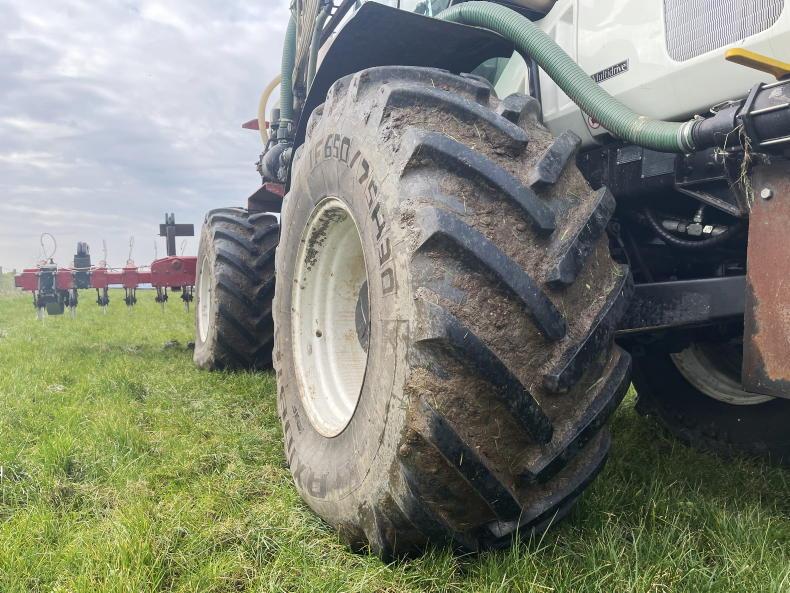
IF tyres can carry load at 20 % lower pressure than standard or carry 20% more at the same pressure.
A significant challenge with VF / IF tyres is the need to have the inflation pressure adjusted for the load, to get the full soil protection advantage from them. This is more important than with a standard tyre.
Rear tractor tyres, 8t rear axle load
A rear axle load of 8t in work is typical of a 120kW (160hp) tractor with 5F plough or other heavy mounted implement, or with a trailer or tanker imposing a 4t hitch load. Standard and IF/VF options for this tyre are given in Table 1. The availability of the 650/65R38 tyre size in standard.
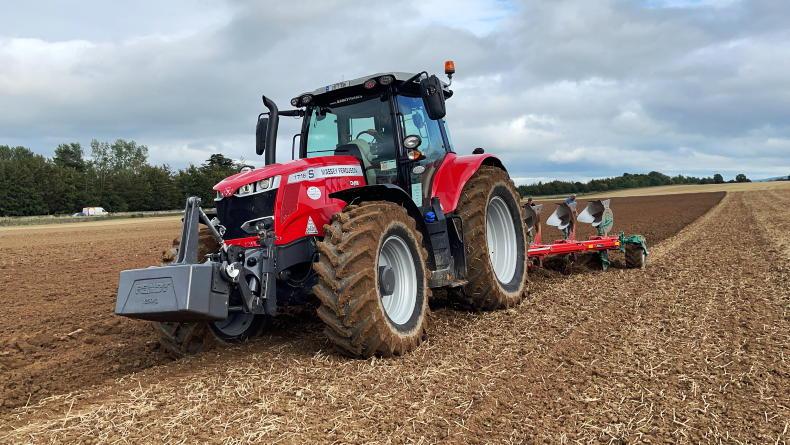
A tractor ploughing with an 8t rear axle load fitted with standard tyres will require an inflation pressure of 1.4bar compared to 0.9bar if VF tyres are fitted.
IF and VF versions clearly illustrate the 20% and 40% reduction in inflation pressure and ground pressure achievable. With standard tyres, even adopting 800 and 900mm wide tyres of the same overall diameter cannot achieve the low inflation pressures/ground pressures achieved by the 650mm VF tyres.
Combine with 18t axle load
Combines present an interesting challenge as their field work is usually at quite modest forward speeds allowing the relatively high loads to be carried at a low tyre pressure for a given tyre size. But the use of newer-technology tyres can reduce the pressures further. A huge constraint with modern combines is their width, and the fitting of very wide tyres can make road transport difficult. Tracks are sometimes fitted to larger machines as they reduce ground pressures, without making the combine wide for transport. The IF tyre technology offers a partial compromise (VF tyres only becoming available for front combine tyres). Tyre options for a larger combine with a 18t axle load working at under 10kmh in the field are given in Table 2.
The IF technology reduces pressure from 2.2 bar to 1.4 bar for 800/65R32 tyres and from 1.6 bar down to 1.2 bar with the larger volume 800/70R32. The IF-rated tyres in the table are able to achieve ground pressures at least as low as standard tyres of 900mm or 1050mm wide, while avoiding the increase in width, of up to 0.5m, that the wider standard tyres would cause.
Row crop tyres
Row crop tyres, where the tyre width is limited by the need to fit in a tramline, crop row or bed system, benefit the most from IF/VF technology, as there is a serious threat to soil structure where these are used. VF options should be the automatic choice in this case, along with selection of a size that is an acceptable compromise between tyre width and load carrying capacity.

Row crop tyres, where the tyre width is limited by the need to fit in a tramline, crop row or bed system, benefit the most from IF/VF technology.
In the example in Table 3, the difference in pressure is illustrated for one example. While a need for 1.8 bar still risks damage in all but very dry conditions, the standard tyre’s 3.2 bar is not suitable for any soil use.
Finally
The newer technology tyres allow greater tyre side wall deflection, lower inflation pressure and consequently lower ground pressures. This technology should replace standard tyre carcass design to help halt the damage being caused by heavy machines. But they must be inflated at the correct pressure for the load being carried.
Increasingly, tyre manufacturers are offering VF and IF marked tyres, but at a considerable price premium to tyres of similar dimensions. With standard tyres on today’s larger machines already expensive, how can the extra costs of the VF/IF tyres be justified? The answer is not simple as the VF/IF technology does contribute better performance where it matters – between the tyre and the soil.
Key function
Tyres have many functions on tractors and machines including transmitting power, providing suspension and steering; but by far the most important role is to carry the load of the machine and to protect the soil in the process.
Increasingly, heavy machines result in huge axle and wheel loads which threaten the soil structure. Tyre size and type play a big role in determining if that wheel load damages the soil.
Tyre size, ground pressure and inflation pressure
In simple terms, the bigger the contact patch between the tyre and the soil, the lower the ground pressure that is exerted. Wider and taller tyres will have a bigger contact area and lower ground pressure for a given load than narrower, smaller ones.
But tyre inflation pressure also plays a key role as it is the inflation pressure within the tyre which determines the ground pressure exerted beneath it.

Larger tyres can carry a load at a lower inflation pressure and consequently lower ground pressure. In this way, the required inflation pressure of the tyre for its load can be used to rate how effective tyres are at lowering ground pressure. This relationship was confirmed in research at Oak Park where there was a direct relationship between soil stress and required inflation pressure (Figure 1).
Tyre deflection and inflation
pressure
While lowering the inflation pressure lengthens the contact area and reduces ground pressure, it is limited by the risk of damage to the tyre carcase. Tyres are limited to a certain deflection level. Higher speeds need less deflection (higher pressure) to avoid carcase damage. All standard tyre sizes have run at similar levels deflection for years. But over 15 years ago, Michelin introduced ‘ultraflex’ technology that allowed greater deflection which has been adopted by many manufacturers transforming the working characteristics of tyres.
IF and VF tyres
These new high-deflection tyre carcases are categorised as increased flexion (IF) and very high flexion (VF), with reduced pressure requirements detailed below:
IF tyres: Can carry load at 20% lower pressure than standard or carry 20% more at the same pressure.VF tyres: Can carry load at 40% lower pressure than normal (or 40% more load).These are huge gains, allowing a 420mm wide VF tyre (16.9in) to have the ground pressure of a standard 600mm tyre. VF tyres can have a much longer contact patch, lowering ground pressure, with traction benefits too. Lower ground pressures without increasing tyre width is also advantageous where machine width is limiting (combines and very large tractors) and in tramlines or beds where row-crop wheels are used.

VF tyres can carry load at 40% lower pressure than normal (or 40% more load).
Disadvantages
VF/IF technology is expensive. However as manufacturers offering VF/IF tyres increase, the premium should drop. The limited number of tyre sizes available is a constraint but it is continually improving.
When originally introduced, VF tyres had specific rim requirements, often being wider than that used for standard tyres, but this is a little less constraining now. Manufacturers’ guidelines must be followed.

IF tyres can carry load at 20 % lower pressure than standard or carry 20% more at the same pressure.
A significant challenge with VF / IF tyres is the need to have the inflation pressure adjusted for the load, to get the full soil protection advantage from them. This is more important than with a standard tyre.
Rear tractor tyres, 8t rear axle load
A rear axle load of 8t in work is typical of a 120kW (160hp) tractor with 5F plough or other heavy mounted implement, or with a trailer or tanker imposing a 4t hitch load. Standard and IF/VF options for this tyre are given in Table 1. The availability of the 650/65R38 tyre size in standard.

A tractor ploughing with an 8t rear axle load fitted with standard tyres will require an inflation pressure of 1.4bar compared to 0.9bar if VF tyres are fitted.
IF and VF versions clearly illustrate the 20% and 40% reduction in inflation pressure and ground pressure achievable. With standard tyres, even adopting 800 and 900mm wide tyres of the same overall diameter cannot achieve the low inflation pressures/ground pressures achieved by the 650mm VF tyres.
Combine with 18t axle load
Combines present an interesting challenge as their field work is usually at quite modest forward speeds allowing the relatively high loads to be carried at a low tyre pressure for a given tyre size. But the use of newer-technology tyres can reduce the pressures further. A huge constraint with modern combines is their width, and the fitting of very wide tyres can make road transport difficult. Tracks are sometimes fitted to larger machines as they reduce ground pressures, without making the combine wide for transport. The IF tyre technology offers a partial compromise (VF tyres only becoming available for front combine tyres). Tyre options for a larger combine with a 18t axle load working at under 10kmh in the field are given in Table 2.
The IF technology reduces pressure from 2.2 bar to 1.4 bar for 800/65R32 tyres and from 1.6 bar down to 1.2 bar with the larger volume 800/70R32. The IF-rated tyres in the table are able to achieve ground pressures at least as low as standard tyres of 900mm or 1050mm wide, while avoiding the increase in width, of up to 0.5m, that the wider standard tyres would cause.
Row crop tyres
Row crop tyres, where the tyre width is limited by the need to fit in a tramline, crop row or bed system, benefit the most from IF/VF technology, as there is a serious threat to soil structure where these are used. VF options should be the automatic choice in this case, along with selection of a size that is an acceptable compromise between tyre width and load carrying capacity.

Row crop tyres, where the tyre width is limited by the need to fit in a tramline, crop row or bed system, benefit the most from IF/VF technology.
In the example in Table 3, the difference in pressure is illustrated for one example. While a need for 1.8 bar still risks damage in all but very dry conditions, the standard tyre’s 3.2 bar is not suitable for any soil use.
Finally
The newer technology tyres allow greater tyre side wall deflection, lower inflation pressure and consequently lower ground pressures. This technology should replace standard tyre carcass design to help halt the damage being caused by heavy machines. But they must be inflated at the correct pressure for the load being carried.













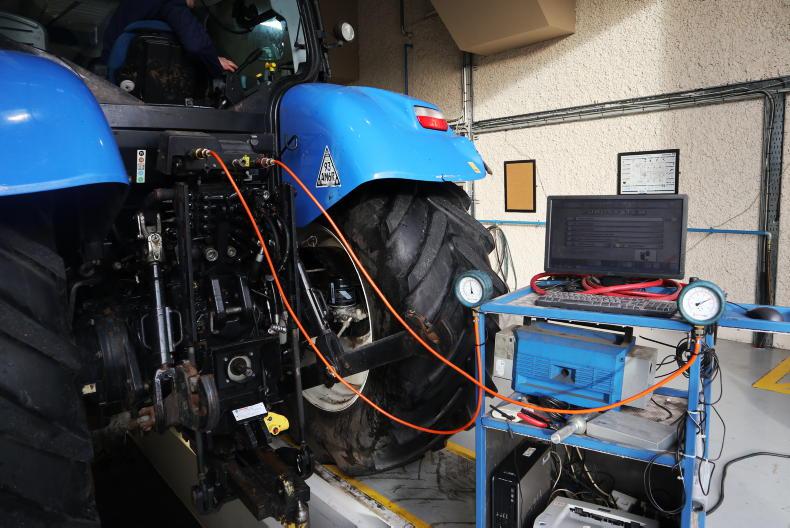
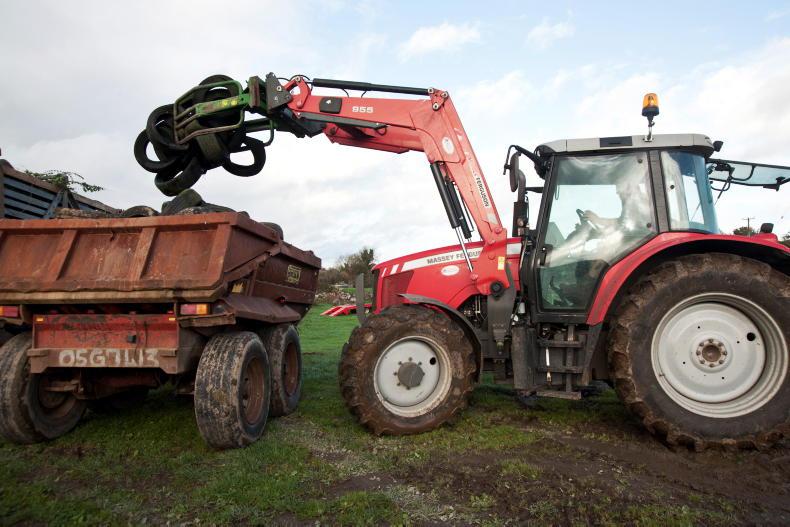
SHARING OPTIONS